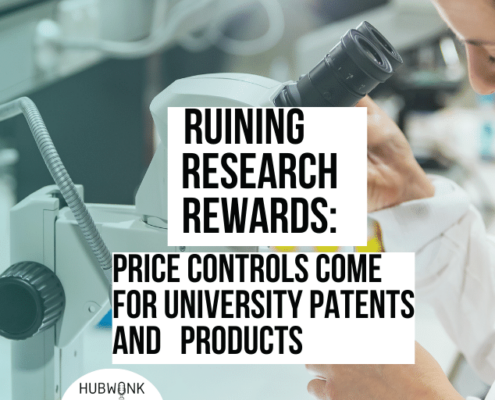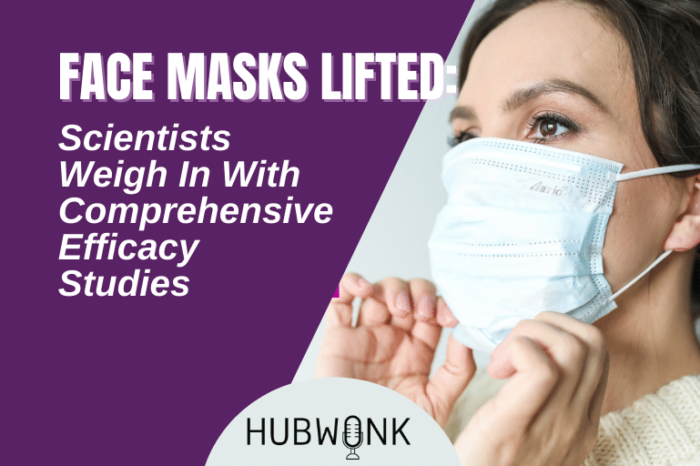Face Masks Lifted: Scientists Weigh In With Comprehensive Efficacy Studies
/in COVID Health, COVID Life Sciences, COVID Podcasts, Featured, Healthcare, Podcast Hubwonk, rCOVID /by Editorial StaffHubwonk host Joe Selvaggi talks with Harvard Medical School professor, Dr. Jonathan Darrow, about the observations of his recent paper, Evidence for Community Cloth Face Masking to Limit the Spread of SARS-CoV-2: A Critical Review, in which he examines the range, quality, and scientific observations of mask wearing efficacy studies.
Guest:
 Jonathan J. Darrow, SJD, LLM, JD, MBA, BS, is an Assistant Professor at Harvard Medical School, where he focuses on the intersection of law, innovation, and pharmaceuticals. He received his research doctorate (SJD) in pharmaceutical policy from Harvard University, where he completed an LL.M. program in intellectual property (waived), as well as degrees in genetics (BS), law (JD), and business (MBA) from Cornell University, Duke University, and Boston College. He has served as a senior law clerk at the U.S. Court of Appeals for the Federal Circuit, worked in private law practice at Cooley LLP and Wiley Rein LLP, taught on the faculties of four universities and for the World Intellectual Property Organization, authored several law textbooks, supported the intellectual property divisions of WHO and WTO, and lectured widely on issues of innovation, intellectual property, and FDA regulation. His areas of bioethical interest include patient autonomy as part of pharmaceutical selection and use, disclosure of drug efficacy information in advertisements, physician and regulator conflicts of interest, and trade-offs that occur when insurance coverage is mandated for high-cost but low-value products.
Jonathan J. Darrow, SJD, LLM, JD, MBA, BS, is an Assistant Professor at Harvard Medical School, where he focuses on the intersection of law, innovation, and pharmaceuticals. He received his research doctorate (SJD) in pharmaceutical policy from Harvard University, where he completed an LL.M. program in intellectual property (waived), as well as degrees in genetics (BS), law (JD), and business (MBA) from Cornell University, Duke University, and Boston College. He has served as a senior law clerk at the U.S. Court of Appeals for the Federal Circuit, worked in private law practice at Cooley LLP and Wiley Rein LLP, taught on the faculties of four universities and for the World Intellectual Property Organization, authored several law textbooks, supported the intellectual property divisions of WHO and WTO, and lectured widely on issues of innovation, intellectual property, and FDA regulation. His areas of bioethical interest include patient autonomy as part of pharmaceutical selection and use, disclosure of drug efficacy information in advertisements, physician and regulator conflicts of interest, and trade-offs that occur when insurance coverage is mandated for high-cost but low-value products.
WATCH:
Get new episodes of Hubwonk in your inbox!
Read a Transcript of This Episode
Please excuse typos.
Joe Selvaggi:
This is Hubwonk I’m Joe Selvaggi
Joe Selvaggi:
Welcome to Hubwonk, a podcast of Pioneer Institute, a think tank in Boston. Among the many ways COVID 19 has changed us is the ubiquitous use of face masks. This new feature on the public’s face has come with some confusion and political controversy starting in April, 2020. When the world health organization asserted that masks were not recommended in any circumstance to the current public health consensus. That mask wearing is essential for decreasing the transmission of COVID 19 remark. This dramatic shift in public health advice was not precipitated by new scientific evidence. Mass wearing advocacy has been in large part substantiated by either observational studies, which could be marred by confounding factors or lab observations that use droplet dispersion as proxies for disease transmission. Fortunately, the scientific community has done extensive high quality, randomly controlled trials on the efficacy of mask wearing in public, which appears to offer a genuine observed consensus.
Joe Selvaggi:
Given the continued vitriol surrounding mask, wearing policy makers and the public deserve the best evidence-based scientific information available to inform individual health choices and help improve the trust in the public health community. So challenged by two years of a pandemic. My guest today is Harvard medical school professor Dr. Jonathan Darrow, Dr. Darrow recently released a 61 page paper, entitled evidence for community cloth face masking to limit the spread of SARS Cov 2 a critical review in which he and his colleagues survey the entire landscape of studies on mask efficacy. The analysis addresses the challenges of studying face mask use in populations and examines the range, quality and scope of the math studies to discern whether there’s clear evidence to support mask wearing Dr. Darrow will share with us the findings of his paper and help us place mask wearing in the context of other interventions, such as vaccines to help fight the spread of COVID 19. When I return, I’ll be joined by Harvard professor, Dr. Jonathan Darrow.
Joe Selvaggi:
Okay. We’re back. This is Hubwonk, I’m Joe Selvaggi, and I’m now joined by Harvard medical school professor Dr. Jonathan Darrow. Welcome to Hubwonk Dr. Darrow. Thanks. It’s great to be here. Well, it’s wonderful to have you, and we’re gonna be talking about masks today, specifically the paper you recently, the released entitled evidence for community cloth faced masking to limit the spread of SARS. COVID 2, a critical review. It’s a very timely paper and it’s a topic we’re all talking about. But I I’m under no illusions. I can already hear a few audience members heads exploding because we’re addressing this issue. So let’s, let’s be very careful about what we talk about, how we the terms we use and the precision of our language. I wanna make sure we, we we address everyone’s concern whether they are advocates of masking or otherwise. I want to dig deep into your papers findings. So before we go into the papers findings, what made you and your colleagues decide to write a paper on this topic?
Dr. Jonathan Darrow:
So there are already many, many studies about mask efficacy, and we actually cite maybe 250 of them give or take. But if you wanna beat the published in the medical literature articles typically have to be pretty short, maybe 4,000 words, or even a thousand or 600 words long. And that may be enough for most topics, but for this topic, a complex topic, a controversial topic, a topic where there are lots of relevant studies we wanted to give the issue of mask efficacy, the attention it deserved. So the goal of the paper was to comprehensively review all or essentially all of the evidence that we could get ahold of. And, and that’s what we did. We, our paper is 61 pages. It has about 24,000 words and about 371 footnotes, we looked at all kinds of different studies. We looked at laboratory studies where participants coughed on Petri dishes with, and without masks.
Dr. Jonathan Darrow:
We looked at mannequin studies where the researchers put masks over mannequins and then measure what happens. We looked at animal studies, we looked at randomized controlled trials. We looked at observational studies. We looked at what I’m gonna call a glorified anecdote like the Missouri hair salon case that got of a lot of press. There was the USS Theodore Roosevelt case, the diamond princess cruise ship case. We looked at studies of pilgrims on the Hodge. We looked at studies in university dormitories. We looked at ma we looked at masks through the con text of different diseases, influenza, influenza-like illness or the 2003 SARS virus. COVID 19. We looked at quantitative meta Ana, which are other groups that look at all of these studies and try to draw some generalizations. We looked at review articles, which is similar to our own. The almost all of the ones we looked at were much shorter. We looked at all of the citations on the CDC mask information webpage. We looked at a review of the evidence from the national academies of sciences. We looked at these things called Cockran reviews, which are supposed to be among the most reliable, unbiased sources of comprehensive evidence. We looked at masks in surge theaters. We looked at mask on airplanes. So we really tried to look at everything.
Joe Selvaggi:
Indeed. I read the paper it was well written in so far as a, a layman like me. I could understand it’s it’s findings, but you set that up very, very nicely as, as, as far as how far and wide your, your research went. I wanna sort of frame for our listeners how far we’ve come until you, you mentioned early on in the paper until April, 2020, the world health organization stated that masks were not recommended under any circumstances. And then you mentioned also Cochran until re recently review of influenza-like illnesses found low certainty evidence for nine trial for nine trials that wearing a mask may, may make little or no difference to the outcome of influenza-like illness compared to not wearing a mask with a 95% confidence interval that we set up at one side of the, the spectrum on the other as recently in the height of the pandemic the New York in New York city, they instituted a $1,000 fine for those who refused to wear face masks in public, assuming that’s outside as well.
Joe Selvaggi:
So we’ve addressed the the issues of, of mask wearing earlier in shows, but never gotten very, very deep. Let’s start at the beginning. Is there basics one, one one plus one equals two. We know you’re at the medical school. We know that COVID 19 is a a respiratory virus. We know that mass, it creates a barrier for the particles. So why do we need to go further? We, we, we a mask limits what can come in or go out of our mouths? Why do we need to go further and examine the data?
Dr. Jonathan Darrow:
So looking at respiratory droplets is a type of surrogate endpoint, and that is an endpoint that’s believed to correlate with a true measure of entry, which is a clinical outcome. So those studies show they suggest that masks are highly effective in blocking respiratory droplets. There are a couple problems with that. One is that you don’t actually know whether it correlates with a true outcome of interest. And the other is that droplets are not the only type of respiratory secretions droplets are traditionally defined as a respiratory particle. That’s more than 10 micrometers in diameter. That is to say they are large by droplet standards. Aerosols are much smaller, or they can be, you know, smaller than that cutoff amount. The evidence about respiratory droplets is generally examine in the context of projections through the mask directly forward. What you don’t know when you’re measuring that is what is coming out, the gaps between the mask and the person’s face.
Dr. Jonathan Darrow:
And this is particularly relevant in the context of cloth masks, which tend not to fit snuggly on the face. So if aerosols are important in transmitting SARS COVID two, which it there’s evidence to suggest that they are the effectiveness in ma of masks in blocking the droplets is not the same as asking whether or not masks prevent the true measure of interest, which is the transmission of disease. So what, what you want to do is to actually study that measure of interest. The highest quality study type is not the laboratory study that measures a surrogate endpoint, but a randomized controlled blinded trial, or an RCT randomized controlled trial that involves assigning people randomly to either get an intervention like a mask or to a control group where they get no intervention. And I mentioned that they should be blinded at least ideally, that would mean that neither the researcher, nor the participant would know in which group they’re in, in the context of masks, it’s hard to blind participants because there really isn’t such a thing as a placebo mask.
Dr. Jonathan Darrow:
So, like I said, we looked at everything, all the study types. And, and what was interesting was that the highest quality study types, which were the RCTs tended to show little or no effectiveness or occasionally there were even findings of negative efficacy, which is to say that there were a small number of studies suggesting that mask could actually increase the rate of disease spread. You have to find, you have to take those findings with a, a grain of salt for the same reason. You have to take the findings of mask benefit with a grain of salt. There are quality problems with almost any study and the results can always occur simply by random chance. But the overall finding of the highest quality evidence was that masks provide no benefit or modest amount of benefit. In most contexts,
Joe Selvaggi:
You, you cited a whole range of papers and studies that you looked at. And I was struck by the fact that there seemed to be a, a negative correlation between small, low quality studies, which, which generally found some effect and larger high quality studies that seem to be more, more confident and found no effect. Why would, why, if you share that view, why would small studies find a positive effect of mask wearing in large studies, perhaps not find that
Dr. Jonathan Darrow:
I’m not sure that I would divide the evidence that way. What I would say is that one of the major patterns was that within the RCTs, there were, they tended to not find a significant benefit. I think we, we found 16 randomized controlled trials overall, and 14 of them found no statistically significant benefit. And the two that did find benefit one was a small pilot study. And maybe that’s what you’re thinking of the same researchers who did that positive study did a much larger follow study. Yeah. And that follow study failed to confirm the benefit they initially found. The other one was the Bangladesh study, and maybe, maybe we will come back to that. That was an enormous study. I mean, more than, and 300,000 subjects in it that study found no benefit to cloth masks. But they did find a small benefit for surgical masks.
Dr. Jonathan Darrow:
So, so there really was not a wide dispersion among the high quality studies. Those studies tended to cluster around zero to small benefit. The, the difference came with the, the non RCTs. So while the RCTs mostly fill the show of benefit, the observational studies usually did find a benefit. And in some cases that was a, a large benefit. So if there’s a wide divergence between the higher quality randomized controlled trials and what are usually considered to be lower quality observational studies, that should be a cue to both researchers and policy makers that there’s something going on. And what I would suggest is probably going on is that there is confounding in the observational studies and that we should probably until we have a reason to believe otherwise, believe what we see in the randomized controlled trials.
Joe Selvaggi:
So I wanna restate, I think what you said very clearly that random RCTs are more controlled, more carefully designed and, and observed you’re saying, okay a group is going to wear a mask group B is not gonna wear a mask and let’s see the difference in outcomes. Whereas an observational study might just say, okay, this group happens to be wearing masks. And this other group happens not to be wearing masks, let’s compare their outcomes in the randomly controlled test, assuming same inputs and same outputs. We measure no effect. The problem with observational studies, you may have very, very different inputs and therefore have to discount the observations of the difference of output. Am I stating that correctly?
Dr. Jonathan Darrow:
Yeah, I think so. The, the way I would describe it is that the observational studies are subject to confounding because they’re not randomized. And, and what that means is for example, if you compare are counties that had mask mandates to counties that didn’t, or states that did have mask mandates to states that didn’t, there may be other differences between the population in the mask states and the non mask states, besides the mask mandate, for example, there’s likely to be more political support to enact a mask mandate in a county or state that has one. And that means that the people in that county might differ in other ways. So maybe people in mask counties or mask states are more willing to wash their hands or more willing to stay home, more willing to keep their distance. Maybe businesses in mask counties are more likely to close more likely to install plastic barriers, more likely to limit occupancy, improve ventilation, use disinfectants for curbside pickup and so on and so on and so on. And so we don’t know that those two groups are actually comparable, and that is the, the basic weakness of an observational study.
Joe Selvaggi:
So an observational study will find a, an effective mask wearing that may be attributable to something besides mask wearing, as you say better hygiene more likely to stay home more social distancing. So, so the observations there’s a correlation, but not a causation in, in mask wearing.
Dr. Jonathan Darrow:
Is that what you’re saying? That’s exactly right.
Joe Selvaggi:
Okay. All right. Now when, when looking at the, the, the, the data, how, how confident or when we find no signal in the RCTs and you say, okay, there’s no benefit how confident or how does one measure the confidence of that? No benefit, meaning we didn’t see one, but there might well be one. We just didn’t find it. Or look, we, we can definitively say in this study, there is no benefit. How, how do we measure that confidence?
Dr. Jonathan Darrow:
So that’s a complicated question, but the, the short answer is that you almost, you can almost never say that we found for, or certain that there is no benefit. What, what you say is that you failed to find a benefit. And so this is really a question of certainty. One of the issues that could happen is that the trial’s very small. And so you have a point estimate that is positive, but positively because the trial wasn’t large enough, the positive benefit doesn’t rise to the level of the statistical significance. Now, even if you have statistical significance that doesn’t necessarily mean that there’s a 100% chance that the benefit is actually there. In fact, statistical significance is often determined at the 95% level. So even in, even in those studies that reported a statistically significant benefit, there a 5% chance perhaps depending on how it’s set up that the result was actually just a result of chance and, and was not an actual benefit of the masks.
Dr. Jonathan Darrow:
So in every study, there is a possibility, and this is even if there’s no confounding at all, that the results could occur, occur purely by chance. And, and something that I think it’s important for, for listeners to be aware of is that that possibility increases if there’s more than one measurement taken in the study. And that’s actually very, very common. So for example, a study might ask whether masks provide benefit among all participants, but then also ask whether the subgroup of participants who actually complied with the protocol, wore the masks, whether there’s a benefit for that group. You might ask whether there’s a benefit for when you measure the outcome as self-reported symptoms, but then also ask if there’s a benefit only in those groups of PE or only in those people who had laboratory testing to determine whether they actually had a particular disease.
Dr. Jonathan Darrow:
So when you slice up the data in all these different ways, it yields multiple point estimates. And for each of the studies, or at least many of the studies we, that we looked at, they, they sliced up the data this way. And, and when you do that, it means that you have multiple bites at the apple, multiple opportunities to find, find statistical significance. Now that’s not necessarily a problem, but when you have researchers who want to find a certain result, or if you have media that wants to report a certain result, it, it can be tempting. And I think we’ve seen this where people will focus on the results that they wanna see and talk more about those and tend to downplay or ignore the results that that showed nothing, or that showed something that they didn’t wanna see.
Joe Selvaggi:
Pete I’m sure. Bias must be a part of any study that any researcher has to acknowledge and, and, and, and try to scrub out of the study any kind of bias, but let me try to shoot holes in, in, let’s say someone who hears you say there’s no evidence of, of the effect of positive effect of, of masks wearing and, and cite your own paper and say that one study, for example, found that while only 12% of the individuals surveyed admitted to not wearing a mask, 90% were observed not wearing one finding the authors described as large and statistically significant discrepancy, meaning people, you know, were told to wear masks. They said they wore masks. Well, they didn’t wear masks. So that would, that would result in a zero effect. I’ll also mention, and I think the is perhaps even scarier in a study of N 95 respirators 25% professional healthcare workers failed to properly fit their masks, despite knowing they were being studied and receiving instructions on how to achieve a proper respiratory respirator fit. So, you know, to someone who wants to say, look, I still believe in masks, despite all these findings that don’t see a result, it’s probably because those people weren’t wearing masks properly. How, how does your research account for that?
Dr. Jonathan Darrow:
Well, first of all, I, I, I have not said, and I would not say that masks have no benefit, but what, what simply what we did is we looked at all of the evidence and we, when you sum up all that evidence and you try to figure out where it clusters it clusters somewhere around no benefit to maybe a small amount of benefit. So that that’s, that’s definitely not to say we we’ve concluded for certain masks have no benefit. So, so that’s the first point in, in terms of the bias. There, there are biases in you know, everyone has their own biases that, and, and no researcher is exempt from that. You mentioned a couple I can mention, I can mention another you know, maybe one more that might be helpful. There was a case control study where 20% of cases, which is to say those people who have the disease wore a mask when they went outside compared to 43% of those who were not infected.
Dr. Jonathan Darrow:
So that those two figures suggest that masks are protective, but the way the study researchers identified the controls was to use sequential digit dialing, which is kind of like random digit dialing. Well, that is a method that’s more likely to identify individuals who leave the home less frequently. So in other words, people may have stayed safe from the disease, not because they wore a mask, but because they were more likely to stay home. And that was simply a product of the methodology, there’s all kinds of other, other problems. There’s the self reporting bias where people may overestimate or underestimate whether they, whether they wore a mask or the number of hours during which they wore a mask. Sometimes some of the studies we looked at questionnaires were administered a number of weeks or months later, at which point people may no longer recall very clearly what, you know, the number of hours that they wore a mask.
Dr. Jonathan Darrow:
People might assume that they must not have worn a mask. Often enough if they got the disease, even if objectively, they actually wore it more than they recalled. Are there other, you know, that that’s in some of the observational studies or studies where the outcomes were measured by asking patients questions, there’s other types of bias in some of the other studies in the preclinical studies that we looked at, for example, where a Petri dish is placed in front of an individual who coughs either through a mask or not through a mask, you’re measuring the droplets in front of the mask. But if the mask diverts the jet of air to the side, through say a gap between the mask and the skin, we don’t know whether the masks early diverting the respiratory secretions from the person in front of you, to the person beside you or the kid who’s standing below you. So there’s really no limit to the number of potential confounders and a number of ways that the data can be a bias. And that’s, that’s simply a challenge of the data,
Joe Selvaggi:
Your your answer reminds me of a show we did on polling, why polling is often inaccurate. The people you call don’t necessarily represent the voting population for a number of reasons. So it sounds like a, a, a very similar challenge for, for, for your scientists. Let me, let me again, I’m trying to play devil’s advocate and say, look mask wearing you know, maybe it’s a function of the quality of the mask or which mask I choose. There were some studies, some large studies. You mentioned the Bangla study earlier that that compared cloth masks, which appeared to have no benefit with surgical masks, that seemed to have a measurable benefit. Can you, can you speak to, you know, when we, in this show, we’re talking about masks as if they’re all the same. Did, did any study find us substantial difference between between the quality of mask?
Dr. Jonathan Darrow:
We did look a small part of our research was to look at studies that compared ma the mask types. And I believe there were a, a number of studies that found no difference, which is a little bit surprising that you know, some of these were not inferiority studies, so that the point of the, the trial wasn’t to show that one was better, but to show that one was non-inferior to the other, but those, those did com compare cloth masks, surgical masks. And in some cases, N 90 fives. And of course, those are not monolithic categories. A cloth mask can have multiple layers, a surgical mask can have multiple layers. They can have nose clips or not. They can have ear loops or not. So there’s different ways that, that each of these mask types can be made. So there’s really quite a, it’s a more of a spectrum of mask types than a discreet number of mask types. And that, that does introduce the complexity. Another complexity with looking at masks and comparing mask types is that in some cases, people will be provided with a large number of masks and in other cases they won’t. So I think there was one study where people were provided with several dozen masks of the surgical mask type, but, but maybe not, not as many of the comparison mask type. Well, if you’re not changing the mask as frequently, which may be more typical in the community setting that could have a, an impact on transmission.
Joe Selvaggi:
Did any of the studies talk about the, not the quality of the mask, but the quality of the mask user, how, how effective, you know, did, did, were they trained? I believe in the Bangladesh study, they, they, they instructed people on proper mask usage. Did, does, does studies say, look, a, a, a great mask used properly is, is effective, but most people don’t use it effectively. How, how would your analysis look at that?
Dr. Jonathan Darrow:
So I don’t recall any studies that looked at that exact question, but the, the study that you highlighted, where the professional trained workers who knew, knew that they were being watched 25% of them were unable to correctly fit the mask that should give a hint of how likely it is that you can get a population of hundreds of millions of people to correctly wear the mask. And there were similar problems with adherence. So adherence, meaning whether you were following the protocol or not in these randomized trials, where there are instructions given at the beginning, there are researchers who are sometimes checking in periodically with these study subjects even in those cases, adherence was often poor. So if adherence is poor in the idealized setting of a clinical trial, it may imagine how difficult it will be to achieve adherence in the real world.
Joe Selvaggi:
Well, I, I don’t know if you know where I’m, I’m going with this. So I’m saying if, if we don’t know, masks definitively are effective and their uses is a marginal at best the quality of how we apply them. You did find some studies that were a particularly troubling that actually found negative effects or that Massa usage could make you more likely to get sick. I think we’re sort of hinting at possible answers for how masks could be detrimental, but I, I want you to address that that question more broadly, how could masks harm?
Dr. Jonathan Darrow:
So the, the most important way that masks could cause harm is if it leads people and policy makers to overestimate the benefit, and then decisions are made that might not have been made without the license. That’s perceived to be given by the presence of the masks. So maybe people who wear masks feel more comfortable going back to work, maybe policy makers feel more comfortable opening schools maybe people feel more comfortable going to sporting events, flying airplanes, traveling abroad, and so on. And, and I’m not saying that we shouldn’t do those things, but the risk is that if we assume that cloth masks keep us safe and they don’t keep us as much safe as we think they do, then we could actually be worsening the situation by telling people that they’re highly effective masks can also cause harm in a number of other ways.
Dr. Jonathan Darrow:
Maybe people who wear mask will approach closer to one another. Maybe they will lean to the side of plastic barriers because they can’t hear very well. And they can’t read lip movements. Maybe people will take a clean mask, place it on a contaminated surface, such as a restaurant table, a bathroom counter stuff, it in their pocket, and then they place it on their face and cause contamination, maybe some of, and who’s sick will touch his or her face more often with a mask to pull it back up over the nose, or to make them feel more comfortable to adjust it. And then contaminate their hands. Maybe masks in real world, world settings are not washed that often. Maybe they’re especially know in a sick individual they’re serving as homemade disease cultures, you know, carried around, touched, put in pockets transporting a disease from setting to setting.
Dr. Jonathan Darrow:
And then there are other harms that are not disease transmission harms like the cost of providing a continuous supply of masks to a global population of 8 billion people. And the environmental harms that result when those masks are eventually discarded. So I, I don’t think we’re looking at the entire picture to just assume that well, even if there’s a small benefit, it’s worth the cost, we need to consider what those costs are and how big the benefit is before making a policy decision. So again, I’m not suggesting that mass have no efficacy or that policy makers definitely should choose to not have mass mandates. They should, they should simply consider what the evidence actually shows, the amount of benefit that appears to, to be, you know, that appears to be there from the masks and the potential harmful consequences that, that flow from from using and purchasing masks and then make a decision.
Joe Selvaggi:
You, you touched on enough there. I think the, the, the greatest harm here of, of mask mandates is perhaps it takes focus away from things that work only marginally, well, we’ve talked about you’re not going to assert that they’re worthless, but they’re margin. Their benefit is, is, is only barely me measurable. But rather we’re taking focus away from those measures that absolutely do affect the spread and the severity of the disease, namely vaccines and hygiene, and those sorts of things. I is your concern about mask wearing or maybe you don’t have concern about mask wearing, but is that among the concerns of the, that masks mandate or advice will be harmful to the general public?
Dr. Jonathan Darrow:
Yeah, I think you hit the nail on the head. The, the most important intervention at the moment is vaccines. You certainly don’t want people to be thinking that they don’t need a vaccine because they’re wearing a mask. You also don’t want people to not trust that vaccines are safe and effective because they’ve heard incorrectly that masks are more effective than the evidence actually supports. So we don’t want to undermine public trust by misrepresenting the effectiveness of masks, because that can have negative consequences for truly important interventions, like, like, like vaccines.
Joe Selvaggi:
Now you’re a, a public health professional. So trust is, is key to the success of your, your, your business we’re recording today. I, I heard Dr. Fauci recommend that or, or state that it’s likely that we’ll be wearing masks on airplanes indefinitely into the future. Notwithstanding what we’ve discussed here today does a statement like that risk undermining the trust in, in public health officials. I, I recently flew to England and back with my wife and the air airline itself stated that the odds of getting infected on an airplane were one in one in 1.7 million. So the airplane air companies seem to understand it. Dr. Fauci has a different point of view. Do you think there’s a risk in compromising public trust in public health here?
Dr. Jonathan Darrow:
So I, I don’t know that I can comment specifically on airplanes. There, there were a number of studies that we looked at that, that took place or that we’re, the setting was an airplane. What I can say is, is that my career has been focused on addressing issues of drug effectiveness and to a lesser extent medical device effectiveness, surgical procedure effectiveness and of course from masks are a type or C can be considered a type of medical device. So that, what I think is important is that we have to look at the evidence and then communicate what that evidence shows to the patient. It, it’s not enough to say a drug is, or isn’t effective. It’s not a binary question. It’s not enough to say a mask is, or isn’t effective. It’s not a binary question. You have a right to, to know the magnitude of the benefit as to the extent that the, there is evidence available to communicate that information. And I think the failure to communicate that information, whether it’s masks or drugs or anything else is the, is the act which undermines the public trust.
Joe Selvaggi:
Indeed. so again coming back to the masks you know, again, we’re I don’t know if you live within the, the city walls of, of, of Boston, but I do, we have a indoor mask mandate and I believe as early as this morning, there’s now a vaccine mandate should the public health community be doing a better job of communicating the efficacy of, of both. And what would you say to policy makers here in Boston? A city that has exemplary rates of vaccination. And I, I assume hygiene practices what would you say to public policy listeners of the show? What would be the most prudent course of action? Were, were they to consult you
Dr. Jonathan Darrow:
You mean with respect to vaccines,
Joe Selvaggi:
Vaccines and masks? I mean, re relatively, we, we, we sort of stated a earlier that vaccines are immensely effective and saved and mass marginally. So what would you say to, again, we’re, we’re talking about trying to engender a sense of trust in the public health community and our, our political leaders. Is there any, any, any guidance you might offer you know, going forward now, again, we’re, we’re recording in the, in the midst of Aron’s ascendants what would you say is a good policy comment or procedure going forward?
Dr. Jonathan Darrow:
So I would say based on the best available evidence, vaccines appear to be highly effective masks, you know, somewhere near, near a one approaching 100% effectiveness compared to masks, which are approaching if not at zero percent effectiveness. So when you have two interventions that are so dramatically different in effectiveness, and of course we don’t know the exact percentages, I’m giving you kind of a general sense of about where they are when you have two interventions that are so different in effectiveness, and you portray them as being both important to the fight against COVID 19. That is a perspective that in my view, undermines public trust. So I, I would encourage policy makers to continue their efforts to promote the, the uptake of vaccines. And while suggesting that while clearly communi communi, sorry, while better communicating what the evidence actually shows about the effectiveness of masks, certainly again, it may be, may be within it, it, it may be appropriate for public policy makers to impose mask mandates. It certainly is up to an individual if they wanna wear a mask. But to suggest that they’re similar in nature to vaccines, I think is just completely unsupported by the evidence
Joe Selvaggi:
We’re getting closer to the end of our time together. I have to imagine there is some controversy surrounding the release of your paper. How has the, either the public health community, or, or the, you know, the Harvard community reacted to, to the paper are, are, are, are people cheering your your evidence based comprehensive study to understand mass usage and, and efficacy better? Or are they looking at you as if you’re further confusing the the public health messaging?
Dr. Jonathan Darrow:
You know, I’m not sure my, my sense mostly comes from what I’ve seen on Twitter, which is a highly non-represented sample of individuals. And my sense from, from Twitter is that the people who like masks still like them and hate our article and people who don’t like them still don’t, and, and maybe, maybe they like our article. But the, the problem is that I don’t think hardly anyone on either side has actually read our article. I think they may have read the abstract and I’m hope hoping that that will change in the coming weeks, because what’s really important about our article is the evidence, it, it, it for the individual to read and consider and determine what they think about masks based on the evidence, not based on what you hear on the evening news or, or for me on this you know, on this audio dissemination. But what, what does the evidence actually show and what does that mean for you? Whether you’re an individual or whether you’re a policy maker, what are you going to do with that evidence? It’s
Joe Selvaggi:
Well, thanks. We we’ll have to leave it there, but first Dr. Dar, before I let you go where can our listeners who we’ve PED their interest? I hope where can they find your paper published?
Dr. Jonathan Darrow:
So this is on the working paper series of the Cato Institute website, probably the easiest way is to just Google Darrow, D a R R O w. That’s my last name and masks and Cato. And I expect that it would come up. Wonderful.
Joe Selvaggi:
Well, I’ve read it. It it’s great. I’ll read it again. It’s really a valuable piece of research at a time when there’s a heck of a lot of confusion. Thank you very much for joining Hubwonk and helping to inform our listeners, Dr. Darrow, thanks.
Dr. Jonathan Darrow:
Thanks so much for having me.
Joe Selvaggi:
This has been another episode of Hubwonk a podcast of Pioneer Institute, a think tank in Boston. If you enjoy today’s show, there are several ways to support us. It would be easier for you and better for us. If you subscribe to on your iTunes podcast, catcher, if you’d like to make it easier for others to find Hubwonk, it would be great if you offer a five star rating or a favorable review, if you have ideas or comments or suggestions for future Hubwong episodes, you’re welcome to email me hubwonk@pioneerinstitute.org. Please join me next week for a new episode of Hubwonk.
Recent Episodes:
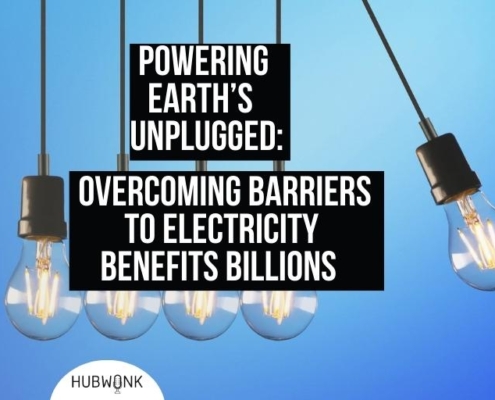
Powering Earth’s Unplugged: Overcoming Barriers to Electricity Benefits Billions

Peace Through Compassion
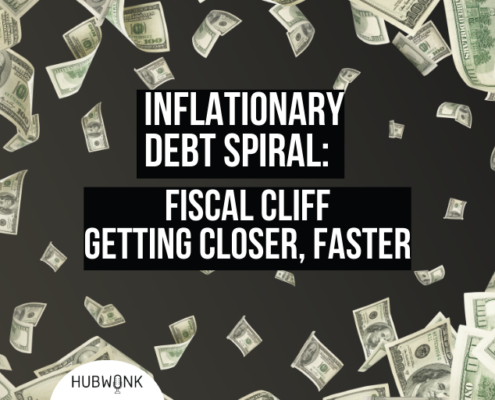
Inflationary Debt Spiral: Fiscal Cliff Getting Closer, Faster

Identity Politics Ideology: Woke’s Orthodoxy and Opposition to Liberal Values

Federal Firearm Forfeiture: SCOTUS Considers Gun Rights and Due Process
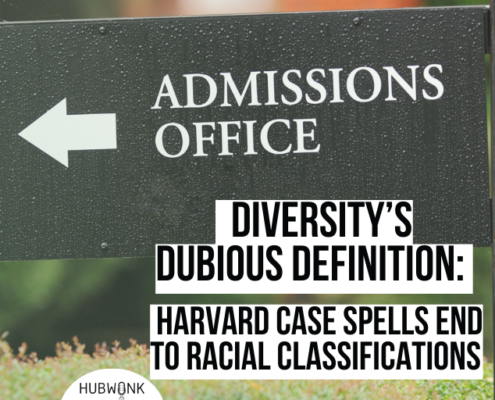
Diversity’s Dubious Definition: Harvard Case Spells End to Racial Classifications

Untangling Unsheltered Encampments: Home Is Where the Help Lies
